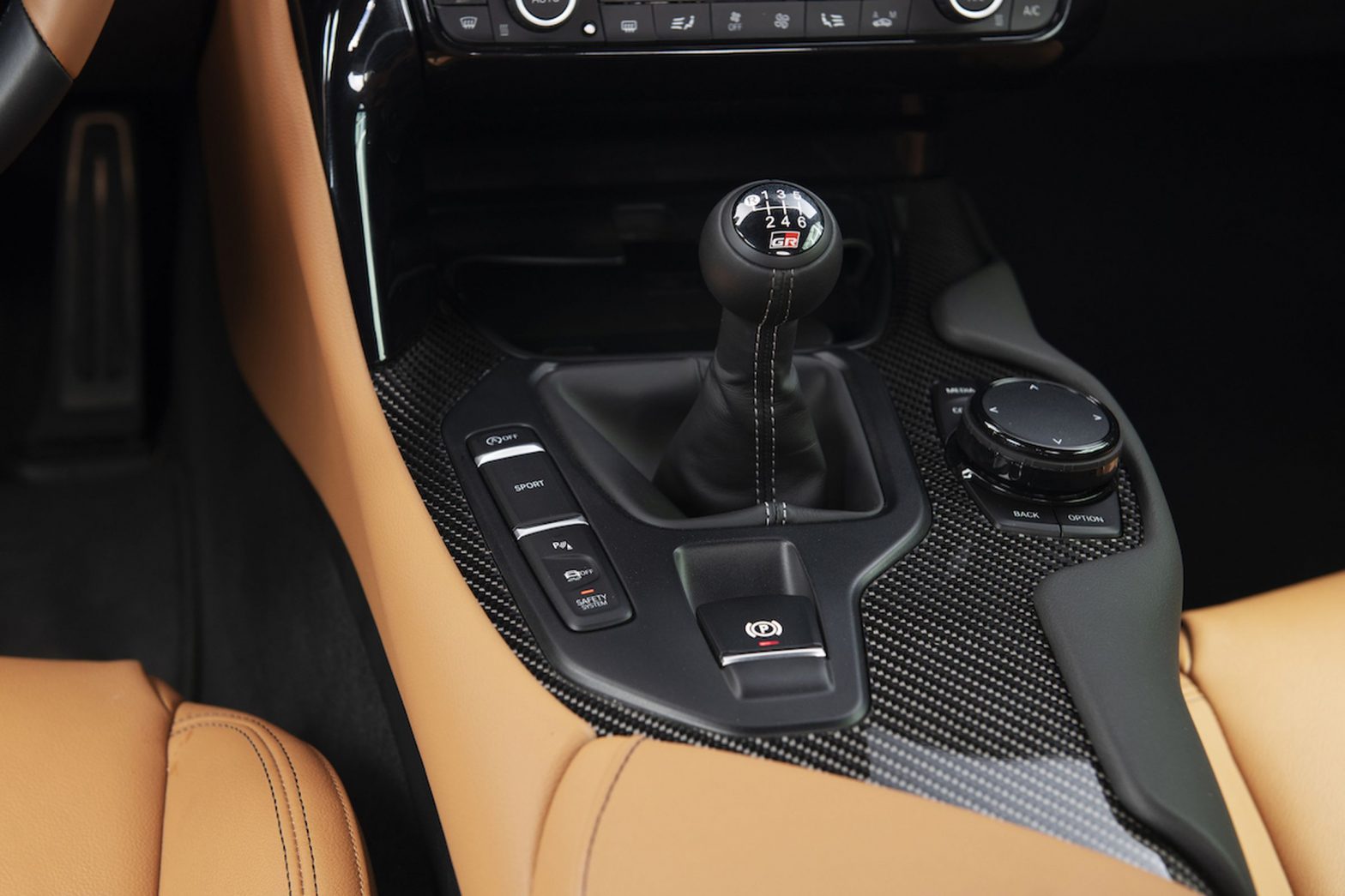/
Toyota is toying with an EV prototype that mimics driving a manual transmission, complete with a stick shift that doesn’t do anything and fake engine noises. What are we doing here, people?
Share this story
:format(webp)/cdn.vox-cdn.com/uploads/chorus_asset/file/24278755/2023_Supra_A91_MT_MatteWhite_113.jpg)
There’s no question that the rise in electric vehicles represents a wholesale shift in the auto industry. But while most car companies appear ready to embrace the electric future, a lot of them are having trouble letting go of the past.
Take Toyota, for example. The biggest automaker in the world is reportedly working on an electric vehicle prototype that mimics the feel of driving a manual transmission, complete with a gear shift that’s not connected to anything and a floor-mounted speaker to pipe in fake engine noises. The car will even pretend to stall out if you fumble the controls — in order to deliver drivers the complete experience of driving a manual car.
Keep in mind this is an electric vehicle. There is no engine, no drive shaft, no gears to speak of. All of this is achieved using software and a bit of smoke and mirrors. Toyota says the goal is to preserve the driving experience for car enthusiasts, but it’s unclear whether people actually want this.
I’m not a car enthusiast, but I know people tend to hate fake shit. (Just look at the fake meat industry. It’s not doing so well.) It stands to reason that they will hate this.
Unfortunately, Toyota is not alone in its attempts to awkwardly merge the auto industry’s past with its future. Dodge has been working on a symphony of fake engine sounds it hopes to include in its upcoming lineup of electric muscle cars. The Charger Daytona SRT concept was the first to stress test this vision with a fake engine sound that sounded like a bobcat that was angry about being neutered.
Reactions were so negative — people likened it to a banshee’s wail, which is not a great look — that Dodge’s CEO was forced to assure fans that the sound was still under development and had yet to be perfected.
Of course, that assumes there would be a fake sound that people would accept. It just needs to be tuned a certain way and its levels adjusted ever so slightly to trigger the right serotonin response from car enthusiasts. And then it will be ready for primetime!
Other examples include an all-electric Ford Mustang with a six-speed manual gearbox (thankfully a one-off, for now) and Jeep’s Magneto concept with a manual transmission. Lexus, which leads Toyota’s high-performance EV efforts, is developing a kind of shifting system that mimics the feel of a clutch and a stick shift in an electric car.
All of this speaks to a deep-seated anxiety in the auto industry about the approaching obsolescence of the internal combustion engine. The fact that it’s centering on manual transmissions is especially weird, given that technology has been in decline for decades now. Barely any new cars are released with stick shift. In 2018, 3.7 percent of new vehicles sold came with manual transmission, according to CarMax; that number dropped to 2.7 percent in 2020.
Toyota engineers say they’re trying to “wow” customers with its fake engine noises and stick shift that doesn’t do anything, but I don’t think customers will be that impressed by a technology that formed the basis of every driving simulator found in video game arcades for the last several decades. If I wanted to feel the steering wheel rattle while zooming through a banked curve at 120 mph, I’ll just go to the mall and play Hard Drivin’. (Are there still arcades? Are there still malls?)
Not only are automakers deeply anxious about the end of ICE engines, but they are also extremely skeptical about the rise of EVs — even as they continue to pour billions of dollars into their development. They can’t predict what kind of subcultures will spring up around EVs, if any at all, and are nervous about the waning relevance of hobbyists and aftermarket restorations — two markets that the auto industry has excelled at cultivating and selling products to over the decades.
We’ve seen an inkling of the types of fan communities that are building up around EVs, and most of it is centered on Tesla, which I think helps explain why the rest of the industry still can’t really fathom what’s going to happen. That’s why we’re getting these goofy gimmicks meant to assuage the gearheads and drag racers who are nervous or openly hostile to EVs. They’re loath to lose those folks, and I get it. They love loud cars! They love speed and the satisfying ka-thunk you get when you change gears. EVs barely make a sound as they accelerate. That’s eerie and weird, and a lot of people don’t like that.
But we can’t let the increasingly endangered combustion engine dictate the terms for our electric future. It’s also why so many electric trucks coming to market are hulking behemoths with larger-than-necessary batteries. Cars will still be fast — in most cases, even faster than before — and EVs will beget their weird subcultures and hobbyist communities in due time. But let’s not pretend they’re something they’re not.
